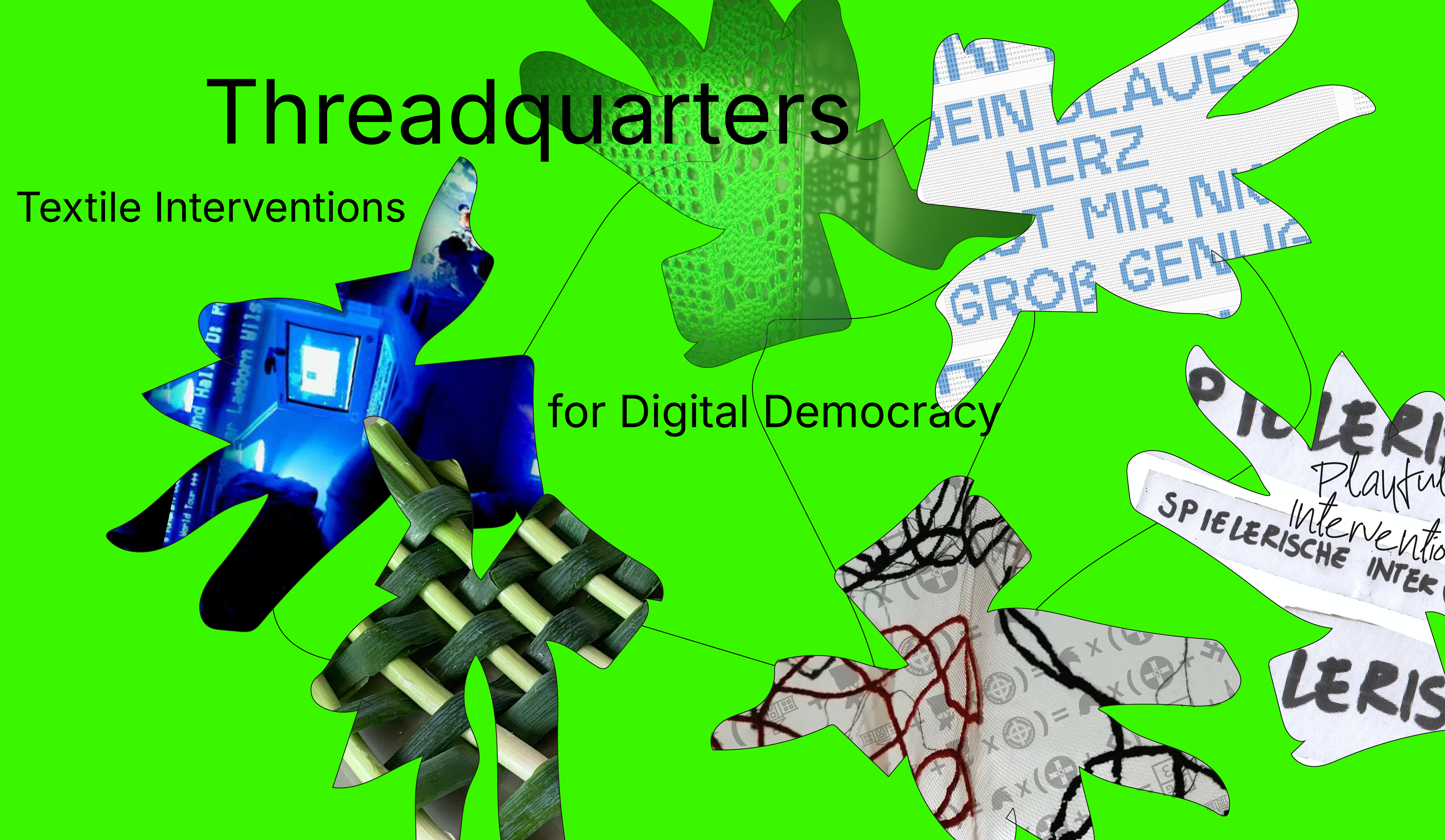THREADQUARTERS –TEXTILE INTERVENTIONS FOR DIGITAL DEMOCRACY

x

HOW CAN WE FOSTER DEMOCRATIC CONVERSATION IN AN AGE OF ONLINE RADICALISATION, POLARISATION, AND SHRINKING PUBLIC DISCOURSE?
That question lies at the heart of Threadquarters: Textile Interventions for Digital Democracy, an participatory, artistic research project by Amsterdam-based designer Katharina Spitz, experienced in translating abstract concepts into the material world and textile mediation, and the Berlin-based artivism duo Threads & Tits experienced in artistic research on radicalization dynamics online. In collaboration they are developing Threadquarters, a workstation that translates digital realities into tangible analogue encounters.

ABOUT THE MAKERS
Katharina Spitz is an Amsterdam-based textile artist and designer with a background in tailoring, fashion and performance. Her work explores inequality, estrangement, and identity through a feminist and materialerial oriented perspective. Collaborations with poet Manka Menga and musician Marlena Käthe have resulted in tactile installations that engage with
femininity, colonial legacies, and embodied memory. Her work has been featured at Textielmuseum, MK&G Hamburg, Fashionclash, Marres and Bureau Europa.
Threads & Tits is a Berlin-based artist duo working since 2022 at the intersection of design research, activism, education, and participatory art. Their work is rooted in social-ecological transformation and has been presented at venues such as Kunstgewerbemuseum Berlin, ACC Weimar, and in collaboration with collectives like The Yes Men. They gained recognition for campaigns like Adidas Realitywear and Democracy Day: Solidarity Forever. Prof. Dr. Gesche Joost (President of the Goethe Institute) describes their approach as “truly inspirational, we learned so much about online radicalisation, counter speech, and collective action."
WHY NOW?
Recent research (Rahel Kramer, Online-Radikalismus, 2024; Tagesschau, 2025) shows how social media platforms like TikTok, Telegram, and YouTube are actively used by far-right groups to recruit young people with aesthetically appealing content. Algorithms and personalisation lead users, especially socially isolated youth, into a spiral of radicalisation. In Europe, the number of minors involved in extremist activities has increased dramatically in recent years (source: European Commission, 2025).
GOAL AND IMPACT
Threadquarters aims to offer an alternative: physical gatherings where digital themes are explored through craft, art, and dialogue. Rather than fuelling polarisation, the project aims at creating sensibility and awareness as it invites curiosity, perspective-shifting, and collective reflection. Textile, as a medium rich in cultural, political, and sensual meaning, will function as the tool of communication and negotiation. Through embroidering, cutting, and sewing, participants unravel the codes of disinformation, ideological symbolism, and identity formation. The process is accessible, physical, and grounded in mutual exchange.
STRUCTURE
The project will unfold through a series of artistic workshops and public interventions in Europe, starting in The Netherlands and Germany. Mobile workshops introduce textile tools and techniques in order to translate and comment on phenomena in the digital space and to spark democratic discourse through communal textile making.
Embroidering, patch-making, and textile commentary become tools for democratic literacy.
Participants co-create textile pieces with slogans, poetic phrases, and reflections on digital culture, sparked by real events or narratives circulating in digital spaces. These online triggers are brought into the tangible realm of the workshop, where they are collectively contextualised, questioned and reworked. Conversations generated during the sessions are documented and translated into analog and digital installations to be shared at festivals, museums, and online platforms. This makes Threadquarters not just a response to radicalisation, but also a form of collective learning and creative resistance. Textile becomes a medium for democratic resilience.

x
